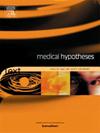The role of hemispheric sensory shifts: Impacts on stretch reflex and motor plasticity post-stroke
IF 2.1
4区 医学
Q3 MEDICINE, RESEARCH & EXPERIMENTAL
引用次数: 0
Abstract
Previous studies have found that post-stroke motor impairments are associated with damage to the lesioned corticospinal tract and the hyperexcitability of the cortico-reticulospinal tract at the hemisphere opposite to the lesion side, i.e., the contralesional hemisphere. While motor deficits and recovery mechanisms have been extensively studied, the role of sensory feedback in motor control has received less attention. We hypothesize that sensory-motor reorganization influences the stretch reflex and contributes to post-stroke spasticity. Effective motor function depends on the sensorimotor network, which integrates proprioceptive, tactile, and vibratory sensory inputs to guide movement and facilitate sensorimotor plasticity. Following stroke, these sensory pathways may undergo significant reorganization, leading to disrupted feedback loops and maladaptive changes in motor pathways. Recent studies have reported a hemispheric shift of somatosensory processing following a stroke. We propose to test our hypothesis by quantitatively analyzing the extent to which reorganization of sensory feedback pathways affects the stretch reflex. Testing our hypothesis will provide novel insights into the pathophysiological mechanisms underlying post-stroke spasticity. This will facilitate the development of customized rehabilitation strategies tailored to individual patient needs including improving their sensory feedback during movement exercise and other therapeutical intervention.
脑卒中后半球感觉转移对拉伸反射和运动可塑性的影响
既往研究发现,脑卒中后运动障碍与受损皮质脊髓束的损伤以及与病变侧相对半球(即对侧半球)皮质网状脊髓束的高兴奋性有关。虽然运动缺陷及其恢复机制已被广泛研究,但感觉反馈在运动控制中的作用却很少受到关注。我们假设感觉-运动重组影响伸展反射,并有助于中风后痉挛。有效的运动功能依赖于感觉运动网络,它整合了本体感觉、触觉和振动感觉输入,以指导运动并促进感觉运动的可塑性。中风后,这些感觉通路可能经历重大重组,导致反馈回路中断和运动通路的不适应变化。最近的研究报道了中风后躯体感觉处理的半球转移。我们建议通过定量分析感觉反馈通路重组影响拉伸反射的程度来检验我们的假设。验证我们的假设将为脑卒中后痉挛的病理生理机制提供新的见解。这将促进个性化康复策略的发展,以满足个体患者的需求,包括在运动锻炼和其他治疗干预期间改善他们的感觉反馈。
本文章由计算机程序翻译,如有差异,请以英文原文为准。
求助全文
约1分钟内获得全文
求助全文
来源期刊

Medical hypotheses
医学-医学:研究与实验
CiteScore
10.60
自引率
2.10%
发文量
167
审稿时长
60 days
期刊介绍:
Medical Hypotheses is a forum for ideas in medicine and related biomedical sciences. It will publish interesting and important theoretical papers that foster the diversity and debate upon which the scientific process thrives. The Aims and Scope of Medical Hypotheses are no different now from what was proposed by the founder of the journal, the late Dr David Horrobin. In his introduction to the first issue of the Journal, he asks ''what sorts of papers will be published in Medical Hypotheses? and goes on to answer ''Medical Hypotheses will publish papers which describe theories, ideas which have a great deal of observational support and some hypotheses where experimental support is yet fragmentary''. (Horrobin DF, 1975 Ideas in Biomedical Science: Reasons for the foundation of Medical Hypotheses. Medical Hypotheses Volume 1, Issue 1, January-February 1975, Pages 1-2.). Medical Hypotheses was therefore launched, and still exists today, to give novel, radical new ideas and speculations in medicine open-minded consideration, opening the field to radical hypotheses which would be rejected by most conventional journals. Papers in Medical Hypotheses take a standard scientific form in terms of style, structure and referencing. The journal therefore constitutes a bridge between cutting-edge theory and the mainstream of medical and scientific communication, which ideas must eventually enter if they are to be critiqued and tested against observations.
 求助内容:
求助内容: 应助结果提醒方式:
应助结果提醒方式:


